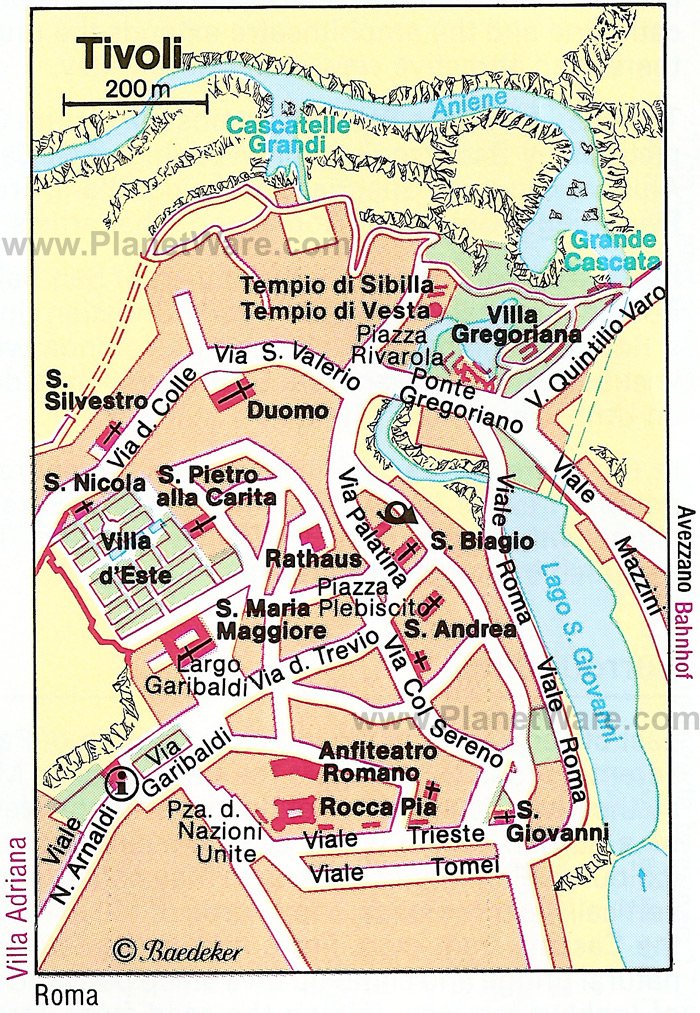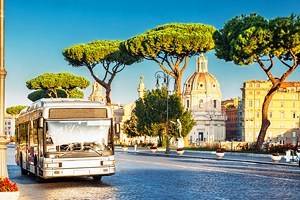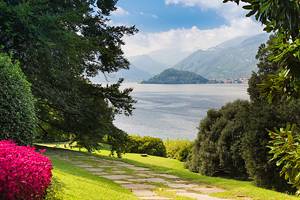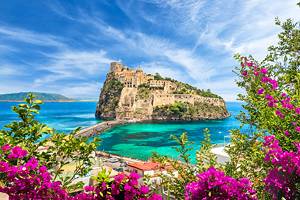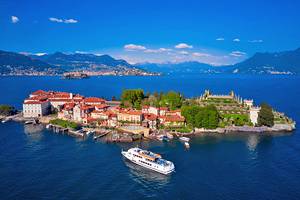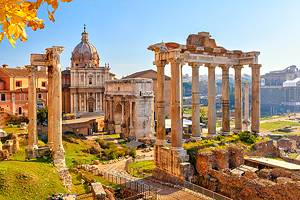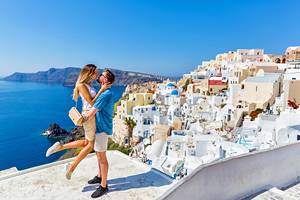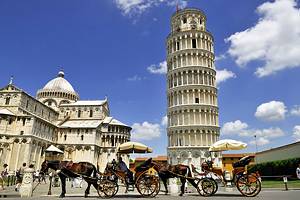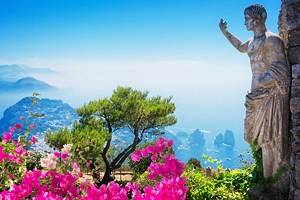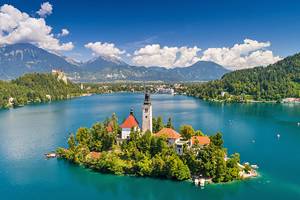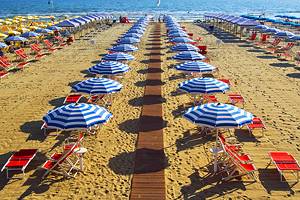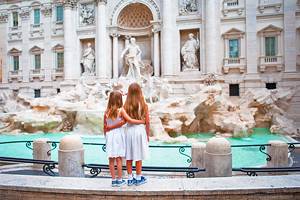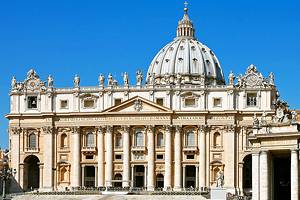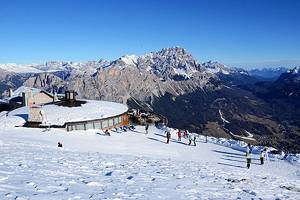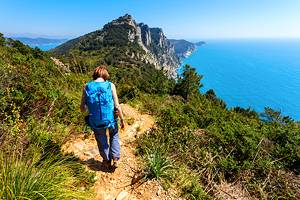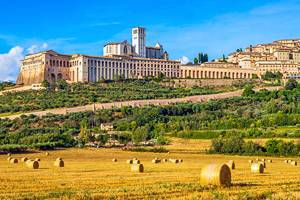Tourist Attractions in Tivoli
The town of Tivoli, the ancient Tibur, lies 30 kilometers east of Rome in the Sabine Hills, beautifully set on a limestone ridge above the ravine carved by the River Aniene. During the Roman Empire, it was a favorite resort of nobles and the Emperor Augustus himself, who sought the cooler air of the hills as an escape from Rome's summer heat.
Although Tivoli is mainly known to tourists for its two world-class attractions—Hadrian's Villa and Villa d'Este's gardens—the town itself has other reminders of Tivoli's long history, including ruins of Roman aqueducts, a medieval castle, and several interesting churches. One of these, San Francesco, is the starting point for a procession on August 14 each year, when a venerated image of the Virgin is paraded through the streets.
Discover the best things to do in this picturesque town with our list of the top attractions in Tivoli.
Villa d'Este Gardens
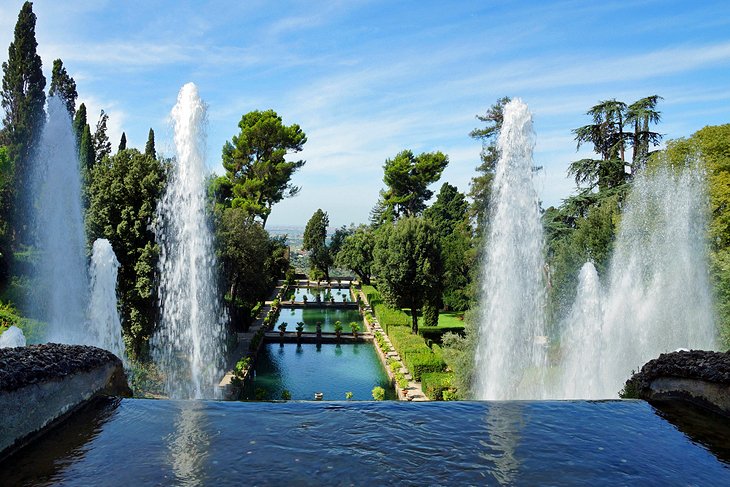
Often cited as the definitive example of Italianate gardens, the vast Villa d'Este estate has been the model for gardens all over Europe. Don't expect to run quickly through, as this is not just one garden, but a whole series of them, highlighted by statuary, elaborate fountains, water play, pools, cascades, grottos, and terraces with spectacular views across the Roman Campagna.
From the time he arrived as Governor of Tivoli, Cardinal Ippolito d'Este, a member of Ferarra's most prominent Renaissance family, set to work planning the grounds to surround the governor's villa.
The layout was unusual for its time, a long central alley intersecting with paths to the major fountains, each set against the surrounding landscape to seem like its own garden. Among the garden's highlights are the elaborate Fontana dell'Organo, with its water-powered organ; the Cento Fountain, a long row of fountains in a stone wall; Fontana dell'Ovato, with its cool walkway behind a waterfall; Fontana del Nettuno; and the Gran Loggia, where the cardinal and his guests dined overlooking the gardens.
Address: Piazza Trento, Tivoli
Villa Adriana (Hadrian's Villa)
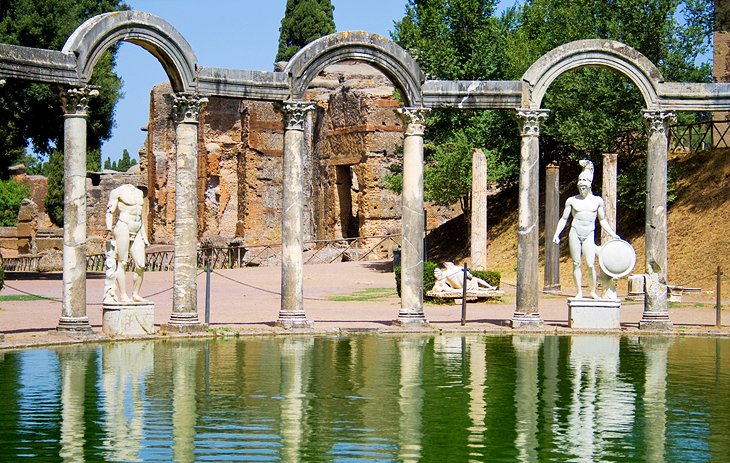
The magnificent complex of buildings and gardens, built in the second century AD by the widely traveled Roman Emperor Hadrian, covers an area of 120 hectares. Hadrian tried to reproduce here in full size some of the places and great buildings he had seen in his travels, especially those of Greece and Egypt. He had some of the finest Greek sculptures reproduced, and many of these are in Rome today, long after the Greek originals have disappeared.
In inscribing it as a World Heritage Site, UNESCO described it as combining "the best elements of the architectural heritage of Egypt, Greece, and Rome in the form of an "ideal city." Today, most of this open-air museum of the finest second-century architecture lies in ruin, but in such a scenic, green setting that it seems more like a romantic garden than an archaeological site.
A few buildings have been repaired or reconstructed, but to appreciate what the complex looked like, begin by seeing the model near the entrance, then explore the grounds and the remains of the imperial palace. You'll find mosaics, baths, a nymphaeum, fountains, colonnades, statues, and the Maritime Theater—a pool with an island where Hadrian escaped the pressures of government.
Address: Via Tiburtina, Tivoli
Villa d'Este Palace
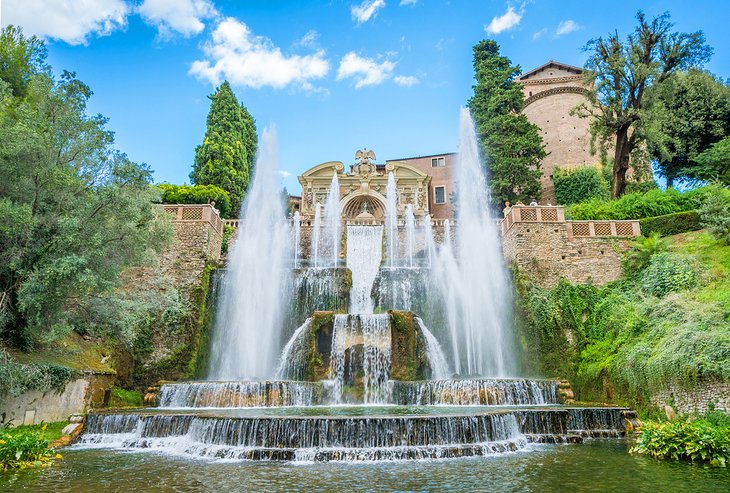
When Cardinal Ippolito d'Este became governor of Tivoli, he immediately set architect/artist Pirro Ligorio to renovating the governor's palace, in a former Benedictine monastery, to his own taste. Some of the brightest lights of late Roman Mannerism—Girolamo Muziano, Livio Agresti, Durante Alberti, Federico Zuccari, Cesare Nebbia, and Antonio Tempesta—decorated its rooms, which were almost completed, along with the gardens, by the cardinal's death in 1572.
Although some of the original wall paintings have been lost, many remain, along with nearly all the elaborately painted ceilings. A row of fountains along a corridor lit from the main courtyard was designed by Ligorio, so the cardinal could enjoy them even in bad weather. Be sure to see the graceful spiral staircase.
The palace was later owned by Archduke Francis Ferdinand of Austria, whose assassination at Sarajevo in 1914 precipitated World War I.
Address: Piazza Trento, I-00019 Tivoli
Villa Gregoriana
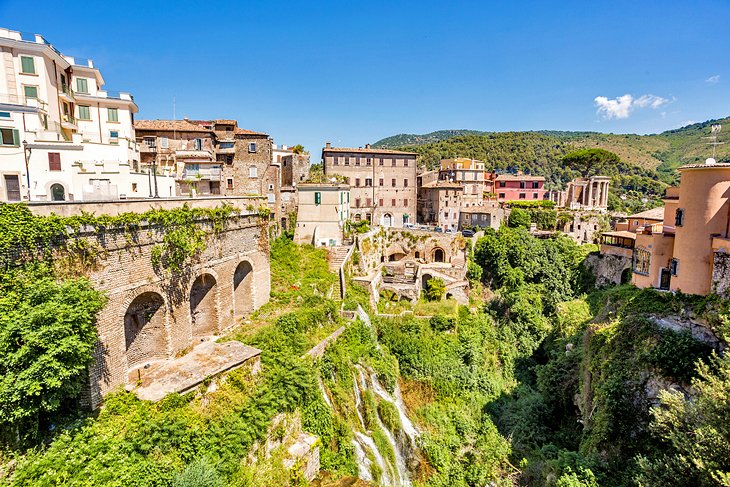
To the east of Piazza Rivarola, Ponte Gregoriana spans the gorge of the Aniene River, and beyond the bridge is the main entrance to the park of the Villa Gregoriana, commissioned by Pope Gregory XVI in 1835.
The waters of this river are diverted through the Traforo Gregoriano, a long double tunnel cut through the west side of Monte Catillo in 1826-35 to prevent the frequent devastating floods. The water emerging from the tunnel forms magnificent waterfalls with a total drop of 160 meters.
At the end of the tunnels is the 108-meter Grande Cascata, which you can see best from the upper and middle terraces. Also in the park are the Sirens' Grotto and, at the end of a gallery, the Grotto of Neptune, where the main channel of the Aniene formerly flowed. From the entrance to the gallery, a path zigzags up to the exit near the two temples.
Address: Largo Sant'Angelo, Tivoli
Tempio di Vesta and Tempio della Sibilla (Temples of Vesta and Sybil)
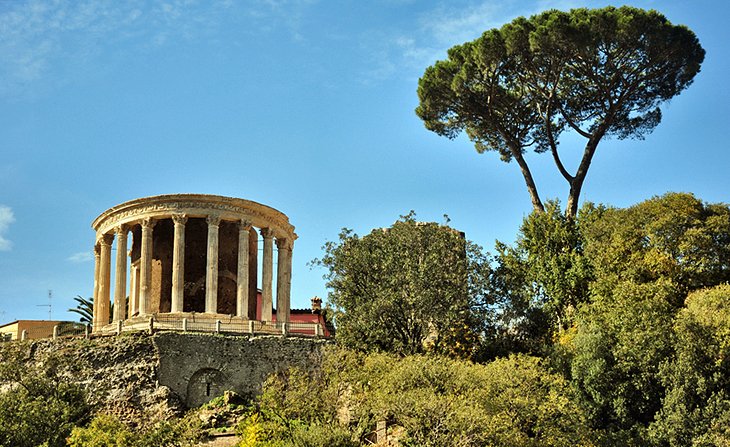
East of the cathedral and not far from Piazza Rivarola, the Temples of Vesta and Sybil sit in Tivoli's old acropolis of Tibur Superbum overlooking Villa Gregoriana. The round temple to Vesta, with 10 of its original 18 Corinthian columns still standing, was built in the second or first century BC. The nearby rectangular temple of the same age is called the Temple of Sybil, although it's not known for certain who either of them was dedicated to.
The round temple owes its relatively good condition today to its Christianization in the Middle Ages as the church of Santa Maria della Rotonda, but any sign of those alterations have long since disappeared. You can also reach the temples by a path from the Villa Gregoriana. The Temple of Vesta was a favorite subject of 19th-century artists on the "Grand Tour."
Address: Via della Sibilla, Tivoli
Rocca Pia
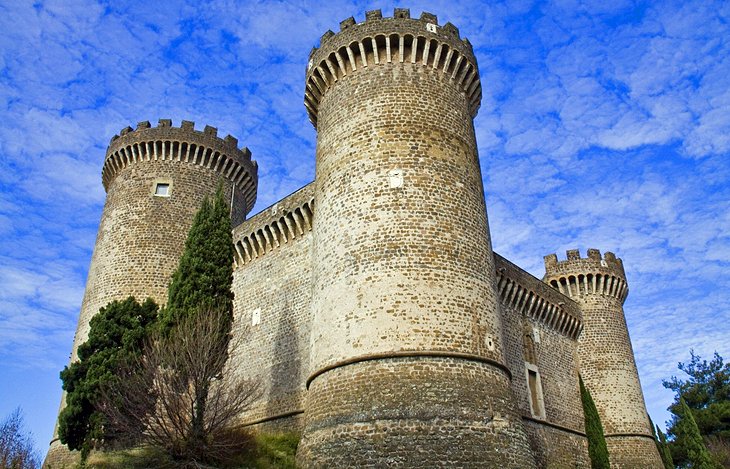
Although the Latin inscription above the entrance to this formidable castle says it was built by Pope Pius II for the protection of the good people of Tivoli from their enemies, the pontiff's intentions were more to remind the frequently rebellious townspeople of papal authority. The resulting fortress, with its four round towers and thick walls, is certainly imposing. Enter it across a drawbridge for views from its ramparts.
Not far from the Rocca Pia, on Via Aldo Moro near Piazza Garibaldi, are the remnants of Bleso Amphitheater, dating from the 2nd century AD. Much of the amphitheater, which seated 2000 spectators, was destroyed during the building of Rocca Pia.
Address: Vicolo Barchetto, Tivoli
Via delle Cascatelle
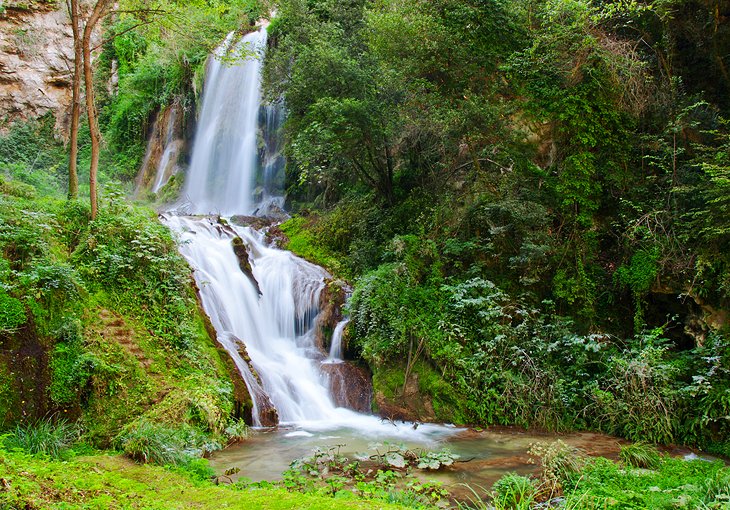
From the entrance to the Villa Gregoriana, the Via Quintilio Varo runs around the outside of the park and then continues along the right bank of the Aniene River, past an arch in honor of the Virgin that was erected in 1955.
From here, Via delle Cascatelle leads along the river with beautiful views of the several waterfalls and the town. The best views of the waterfalls are from the Belvedere and from the church and former monastery of Sant'Antonio.
Mausoleum of Plauzi and Ponte Lucano
Overshadowed by Tivoli's two block-buster tourist attractions, the ancient Mausoleum of Plauzi is an important archaeological site, an example of the elaborate funerary monuments erected by noble Roman families (remember the tomb of Cecilia Metella on the Appian Way in Rome). The broad circular tower, about 35 meters high, stands on a square base, and although it is overgrown and in poor repair, it's an impressive monument.
Beside the mausoleum is the Ponte Lucano, a graceful seven-arch Roman bridge that carried the main road from Rome to Tivoli for more than two millennia. A testament to Roman engineering, it was built in the first century BC and retired from service as the main road only in the mid-20th century, remaining open to traffic until a few years ago.
San Lorenzo
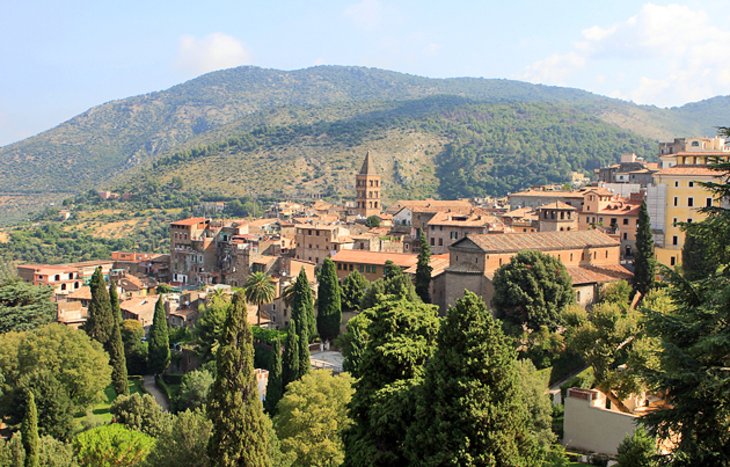
The tall square bell tower of Tivoli's cathedral of San Lorenzo that stands out above the town is from the church's rebuilding in Romanesque style between the 11th and 12th centuries. Behind the present apse, you can still see the apse of the earlier (first century BC) basilica that stood in the forum. The church was rebuilt once again in 1635, this time in Baroque style.
The interior vaults and apse were painted by the Roman artist Angelo De Angelis in 1816, those in the apse representing the four saints from Tivoli. The most important—and surprising—work in the church is in a side altar, the remarkable 13th-century wooden sculpture group Descent from the Cross. Above the altar in the Chapel of the Holy Savior is an excellent early-12th-century triptych of the Savior by the Benedictine monks of Farfa Abbey.
Address: Piazza del Duomo, Tivoli
Anio Novus Aqueduct
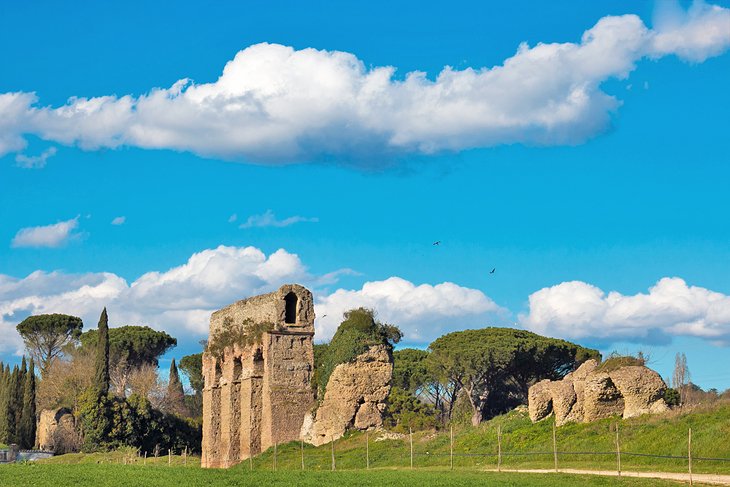
Begun by Emperor Caligula in AD 38, the Anio Novus Aqueduct was one of the four great aqueducts of Rome (remains of two of the others, the Aqua Anio Vetus and the Aqua Marcia, can also be seen in Tivoli). The Anio Novus was the tallest of these and considered to be the zenith of Roman aqueduct construction.
You can see several remains of the aqueduct along the Via Empolitana, with the best grouped together at Ponte degli Arci, about two kilometers from the center of town. The ruined aqueducts and Mausoleum of Plauzi were favorite subjects for artists, including Corot and Thomas Cole.
Sanctuary of Hercules Victor
A three-minute walk from the Villa d'Este, the imposing Sanctuary of Hercules Victor is an outstanding example of Roman cult buildings from the era of the Republic. Begun in the second century BC beside the Aniene River, the sanctuary was in three parts, covering about 3,000 square meters. A theater was built into the naturally sloping ground; aligned with it was the temple, around which was a large plaza surrounded by porticoes.
The complex was built over an ancient road, which later became the via Tiburtina that was carried beneath the buildings through a tunnel, called the Via Tecta (covered street).
The sanctuary, which housed the statue of Hercules, was designed to impress visitors arriving from Rome, with its foundations rising 50 meters above the river. When the site was no longer used as a sanctuary, its riverside location attracted various industries: woolen mills, an arms factory, hydro-electric plant, and paper mill.
After extensive excavation and restoration, the Sanctuary was opened to the public in 2015, with an Antiquarium established at the former paper mill. It displays sculptures and various stone pieces found in the excavations. The restored theater again hosts performances and concerts.
Address: Via degli Stabilimenti 5, Tivoli
Visiting Tivoli from Rome
Tivoli is about 30 kilometers from Rome, and you can get here by train from Rome's Tiburtina station. From the Tivoli train station, a shuttle bus will take you to Villa d'Este and the town center. Another way, and one which takes you from Rome directly to the two main things to see in Tivoli, is on a guided day trip, offered by several local tour operators.
Map of Tourist Attractions in Tivoli
Tivoli, Italy - Climate Chart
| Average minimum and maximum temperatures for Tivoli, Italy in °C | |||||||||||
| J | F | M | A | M | J | J | A | S | O | N | D |
| 12 2 | 14 3 | 16 5 | 19 7 | 24 10 | 28 14 | 32 16 | 31 17 | 28 14 | 23 10 | 17 6 | 13 3 |
| PlanetWare.com | |||||||||||
| Average monthly precipitation totals for Tivoli, Italy in mm. | |||||||||||
| 74 | 74 | 61 | 66 | 56 | 43 | 28 | 46 | 71 | 89 | 104 | 86 |
| Average minimum and maximum temperatures for Tivoli, Italy in °F | |||||||||||
| J | F | M | A | M | J | J | A | S | O | N | D |
| 54 35 | 56 37 | 60 40 | 66 44 | 74 50 | 82 57 | 88 61 | 88 61 | 81 57 | 72 50 | 62 43 | 55 37 |
| PlanetWare.com | |||||||||||
| Average monthly precipitation totals for Tivoli, Italy in inches. | |||||||||||
| 2.9 | 2.9 | 2.4 | 2.6 | 2.2 | 1.7 | 1.1 | 1.8 | 2.8 | 3.5 | 4.1 | 3.4 |
More Related Articles on PlanetWare.com
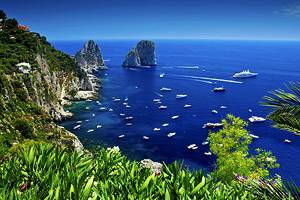
Other Day Trips from Rome: Once you have seen the top tourist attractions of Rome and Tivoli, you may want to take more day trips from Rome. Although most tourist don't think about this destination in terms of a day trip, the island of Capri is one possibility, and our article From Rome to Capri: 5 Ways to Get There can help you plan your excursion.
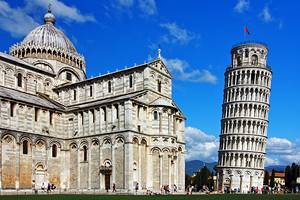
Where to Go from Rome: Italy's fast train system can whisk you from Rome to other top places to visit in Italy, including Naples, the Renaissance attractions of Florence, and the Leaning Tower of Pisa.
